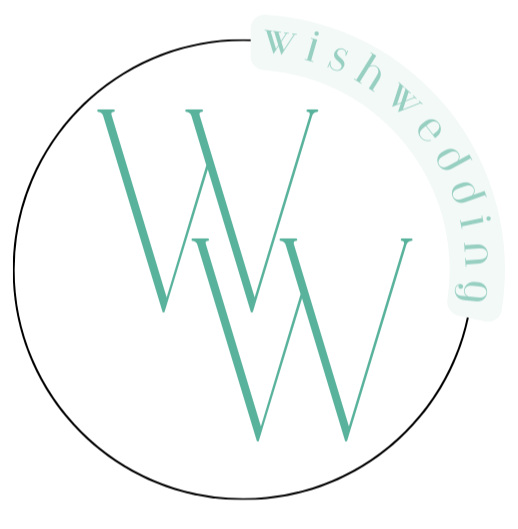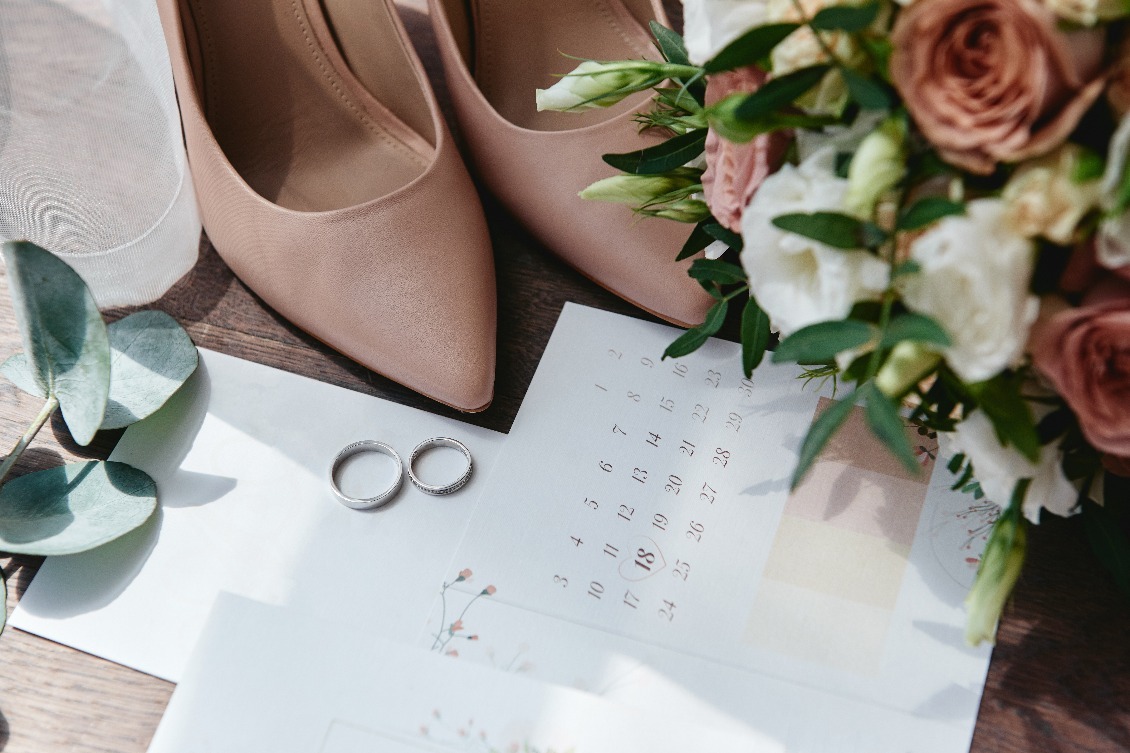What aesthetic, style or vibes do you want for your wedding day? There are so many different themes to choose from - boho, luxe, classic romantic, botanical, farmhouse, modern minimalism, coastal, gothic, even casual - it can be hard to narrow it down.
While you can pick and choose aspects from different aesthetics, having one overarching style or theme will help your wedding feel more cohesive, purposeful and stylish. And it can actually make the rest of your wedding planning easier, too!
picking the perfect aesthetic for you
Picking your aesthetic is something you've got to do relatively early on in the wedding planning process, because once you have your overall style picked out, it can act as a through line to help guide your decisions about big things, like venues, seasons and formality, and smaller things, such as decor, stationery, and even which activities to include in your day.
you and your partner
To help keep things from getting too overwhelming at this early stage of planning, a good place to start is by thinking about your relationship and your personalities. What sort of day-to-day styles do you have as individuals? What interior design style are you drawn to for your home? What activities do you love doing together? Are there any cultural or family traditions that you'd like to honour on your wedding day?
Thinking about this can help you consider starting points for the level of formality, colour schemes and types of venue that you want your wedding day to have.
Another good thing to think about is if there are any particular places or seasons that feel meaningful to you both. If you met at a bar, you might want to incorporate that sort of speakeasy / dance floor vibe for your reception. Or if your first big trip together was to Italy, you can find inspiration in a romantic, rustic, vineyard style. Or maybe you’re both fans of minimalism who thrive in clean, modern spaces, and a sleek, monochrome aesthetic would be perfect for you instead.
Using the story of your relationship as a compass to guide your design decisions can help keep you focused and ensure that your wedding is personalised and suits who you are as a couple.
time and place
If you have a preferred date - your anniversary, for example - keep in mind that the time of year can heavily influence your aesthetic, beyond impacting the expected weather and which florals will be available. Even if you're planning on the wedding taking place entirely indoors, the lighting and scenery through the windows will provide a backdrop that will impact the tone of the setting.
Certain seasons also lend themselves more to particular venues and the aesthetics that are associated with them. For example, winter weddings are often held in historic ballrooms, which lean towards classic elegance or a vintage feel, with heavier fabrics and moodier colours. Meanwhile, beach weddings are more common in summer, and call for light, airy fabrics, natural textures and a more relaxed vibe. Holding a boho wedding in a rustic, wooden barn might work perfectly with the orange and red leaves of autumn as backdrop, while botanical wedding held in a garden or greenhouse venue could be elevated by colourful spring blooms.
If you already have a venue in mind, or even booked, it's important to look at its existing architecture and surroundings when picking your aesthetic. You’ll want to make sure that you're planning for a style that complements the space rather than clashes with it. This can end up saving you time, money and effort when it comes to hiring furniture and decor pieces, as you'll be able to use features already available at the venue, and it will also help everything feel more cohesive and purposeful.
It can also help with setting guest expectations - your venue being a rooftop bar in the city is going to conjure different images in the minds of your guests when they get their save the dates than a forest setting in a national park will.
Speaking of guests, the size of your guest list can also impact the general vibes of the day - it is possible to invoke a cosy, intimate atmosphere at a large wedding, but it's a lot easier to do so with a smaller amount of guests.
colours
Similar to how certain themes can be generally associated with certain aesthetics, colours also have connotations. You're free to mix these up, of course, just as you are with the seasonal themes, but knowing which colours tend to be used for which themes can help you when searching for inspiration, and might help you figure out if you really do like that aesthetic, or if you just like the colour schemes that are popular within it.
For example, modern aesthetics tend to lean more towards more minimalistic colour palettes, like shades of white, black and neutrals; romantic aesthetics often feature soft shades of blush, warm pastels and gold or rose gold accents; rustic weddings are associated with natural colours like greens, browns and shades of rust, terracotta and mustard; all shades of blue, creams and whites are common at beachy weddings; and rich, deep shades like navy, emerald and maroon, often with gold accents, can be found at weddings with glamorous, luxurious aesthetics.
cost
One more thing to keep in mind is that some aesthetics will cost more than others. If you're dreaming of a glamorous wedding in a luxurious ballroom, with gigantic floral displays, custom lighting set ups, elaborate centrepieces and high quality linens, you're inevitably going to have to invest more cash than you would for a more simplistic, understated aesthetic that utilises greenery instead of florals and venue inclusions rather than custom pieces.
It is absolutely possible to have a beautiful wedding with any budget, but it's important to recognise that what you can achieve might not exactly match up with the inspiration you've seen if you don't have an unlimited amount of money to spend.
That said, recognising particular features that you really love during this planning stage can help you prioritise them in your budget - and picking a few high impact, feature pieces to spend more on can easily elevate the entire space.
making a mood board
All of that background planning out of the way, it's time to get to the fun part! Creating a mood board is a great way to gather inspiration and see what common threads you keep being drawn to.
Making Pinterest boards or using Canva templates are easy and effective ways to do this digitally. Cutting out images from magazines and prints and creating a physical scrapbook is a fun choice if you’re more tactile - this definitely takes more effort and is more work, but it can make a really cute keepsake.
This early in the planning process, feel free to add anything that catches your eye to your mood board: any colour schemes, bouquets and floral arrangements, table settings, stationery suites, wedding party outfits, anything at all that you like the look of, without worrying too much about how it could all fit together.
And don't forget to include your partner in this process! They can make their own mood board, you can work on one together, or maybe they can look over yours when you're happy with the amount of inspiration you've gathered and highlight the ones that they're particularly drawn to.
When you're curating these images, it's good to make a note of what they're called or tagged with. Knowing the names that other people are using to discuss these things can be really helpful for finding similar inspiration on other sites, and for explaining what you're going for to other people, including venue staff and wedding planners and coordinators.
Once you've got a good sized collection of inspiration images, you can look through them for patterns. Are you saving a lot of dark tones, rich textures like velvet, and soft lighting, like candlelight? You might be leaning toward a vintage or romantic gothic aesthetic. Or, are you gravitating towards photos with bright colours, a mix of textures and playful accent pieces? Maybe a whimsical wedding is more your style.
You can, of course, choose design elements from different aesthetics to mix together if you find that there's a few different ones you really, truly love. If that's the case, making another mood board that just includes the elements you're most drawn to from those aesthetics can help you get an idea of what they'll look like when mixed together. It can be a great way to play around with how you might include them on your day in ways that feel intentional rather than a haphazard mix of everything that you thought looked nice on its own but don't actually work when they're in a room together.
Choosing your wedding aesthetic should be a fun process! It’s an exciting opportunity for you and your partner to express your personalities and share the story of your relationship through the design details you pick.
Feel free to use plenty of inspiration, but, ultimately, listen to your instincts and pay attention to what you keep being drawn back to. The little details really do add up when it comes to making your wedding feel cohesive and purposefully planned, but don’t feel pressured to copy a style just because it’s popular online. It's important to try and focus on capturing an aesthetic that suits you as a couple and can help create the kind of vibe and feeling you both enjoy. After all, your wedding is the perfect opportunity to design your dream day.
If you're looking for some more specific information about what using styling and decor pieces to elevate your wedding, the next article in this series is the one for you!







